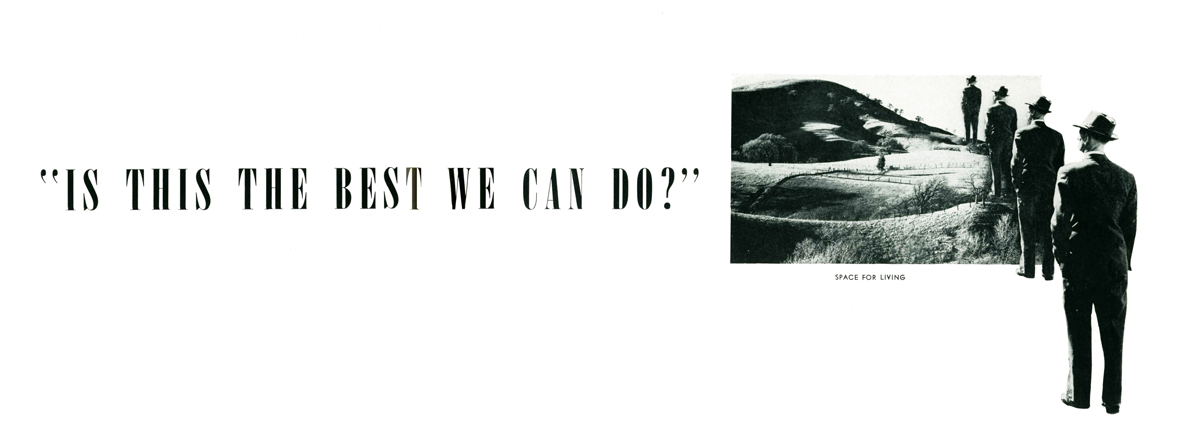Fig.
1 - Civilian Conservation Corps Planting Crew, Huron-Manistee National
Forests (Mich.), June 1939, Source: U.S. National Archives and Records
Administration.

Fig.
2 - Graphics on the occasion of the Telesis exhibition in 1940 at SF
MOMA, Extract from California Arts and Architecture, September 1940.

Fig.
3 - William Wurster Green Camp, section, Mount Diablo CA, 1938, author’s elaboration.

Fig.
4 - William Wurster Green Camp, outdoor room, Mount Diablo CA, 1938,
(Robert Green 1, Wurster_WBE Collection, Environmental Design Archives,
University of California, Berkeley).

Fig.
5 - William Wurster Green Camp, outdoor room, Mount Diablo CA,
1938,(Robert Green 3, Wurster_WBE Collection, Environmental Design
Archives, University of California, Berkeley).

Fig.
6 - William Wurster Pope House, outdoor room, Orinda CA, 1940, (Saxton
Pope slide 1, Wurster_WBE Collection, Environmental Design Archives,
University of California, Berkeley).

Fig.
7 - William Wurster, Pope House outdoor room, Orinda CA, 1940, (Pope
House, Wurster_WBE Collection, Environmental Design Archives,
University of California, Berkeley).
